

Although the war was over, food, clothing and petrol rationing was still in force. The joy felt by many families as fathers, sons and brothers returned home was tempered by the sadness of those who had lost a loved one. Some who had been held prisoner of war or had witnessed dreadful events took time to adjust to 'normal' life.
However there was generally a feeling of optimism and a determination to improve living standards.
Les Shepstone's garage was now built in brick with leaded fan lights to the windows, selling Esso petrol from three pumps. His mechanics Brian Webb and Len Smith were kept busy servicing cars which had been 'laid up' or little used during the war years. Les' son Roy returned to work in the family business following his national service.
Next door John Grey's Wessex Carriers was taken over by the British Road Service. Lt Com G Soutar and CPO Barnes took over the premises and started Dorset Welders. They were acetylene welders who made gates, railings, iron frames/asbestos sheet garages and sheds. Eddie Notley, local builder and sign writer from Laurel Cottage, Laurel Lane, was given the job of painting the sign 'Dorset Welders', and together with his son-
In 1949 Rothan Radiators opened a branch of their Bournemouth based firm in the premises. They specialised in the repair of tractor and car radiators and grilles, supplying car springs and brake linings among other things. They had an outrider who would travel around the area collecting items for repair from farmers and blacksmiths. Harry Hill (who later took the tenancy of the Railway Hotel at Grays Corner, Broadwey) managed the workshop, working with Bob Mowlam and Reg Fursey.
Other businesses which used part of these premises in the 1940's were Frank Bishop's ironmongers and Eric Lee's Dorset Motor Body Works (later to become LeeLine Motors).
When Jack Willis came out of the army he bought a lorry and started up a haulage business in Elwell Street. In November 1949 the council granted him permission to install a petrol pump at number 20, on the condition that it was only possible to fill vehicles inside the garage and impossible on the highway.
Jack Gee took over the watercress beds at the back of Island Gardens in 1947 and was helped by German prisoners of war for a time. They were transported by lorry each day from the camp near Martinstown. They were very friendly men and if they missed the lorry back, they would borrow pushbikes and cycle back. Local shops and hotels were supplied with the watercress.
Len and May Clark took over the tenancy of the Mason's Arms, which now had a spirit licence. The bust of Charlie, taking pride of place, on a plinth in the garden. Florence Wallace was still landlady at the Ship and Percy Hyde at the Standard. J Dailey left the Royal Oak, and several different landlords came and went over the next few years. The Assembly Room at the back of the Royal Oak was used as a meeting and function room by the local Conservatives and British Legion.
The Meech family were still providing employment and homes for many villagers who worked at the mill. Children watched fascinated as the sacks of grain were lowered by wheel and pulley down onto the lorries from the grain store opposite the mill. On one or two occasions a great commotion would occur if a workman lost his grip on the rope, causing the sack of grain to fall and split on impact with the ground, sending grain all over the road. Then the children sprang into action, collecting as much of the grain as they could to take home and feed the chickens. If you arrived home a bit late, you'd be forgiven if you produced your hanky or hat full of corn!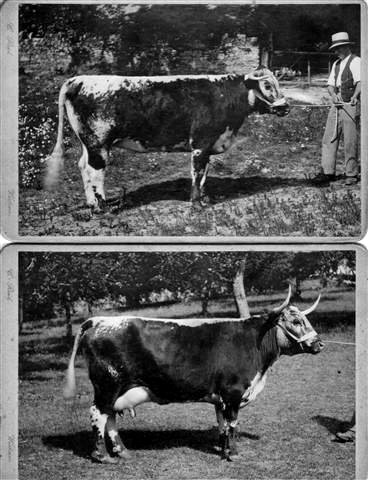
Moving the cows from Bayard Farm to Hurdlemead (junction Elwell Street) along Church Street was a tricky operation, Wendy Harris (nee Godden) remembers 'first we had to run down the road closing all the gates, then stop the cows going up Elwell or further on down Church Street. Great fun when the summer visitors were about!'
After quite an adventure these cattle from East Hill Farm were prize winners at the Bath & West Show. They were walked from Upwey, over Gould's Hill to Dorchester West Station, where they were loaded onto the train to get to the show at Shepton Mallet.
The Wishing Well Stores at 84 Church Street changed its name to Eckersalls. Selling just about everything a general store could, including a vast collection of sweets in large glass jars which lined the wall to the right of the door. Sometimes when you entered the shop, you would think that no one was there -
Elwell Street was still the main shopping centre, with Bowditch the butcher; Barbers the grocers at Times Stores; Mr Hansford the boot repairer lived opposite. Miss Corbin and Miss Dunn were at the post office, offering a standard of service from long ago. Mr Wagstaff's shop at number 28 sold wet fish on certain days of the week and proved a very popular 'take away' on the evenings he sold fish and chips.
There was a market garden at either end of the street and one in the middle, Warr's Nurseries next to the Reading Room, Hare's behind the stone wall half way up and Burden's at the foot of Little Hill.
Bennett's then Sansom, ran the nursery at the top of Stottingway Street (later to become A E Miles Nurseries) and it was a common sight to see housewives queuing up for tomatoes grown in the large greenhouses.
At 829 Dorchester Road, O W Baker and his son Richard had a good reputation as high class bakers. Soon after the war Eddie 'the baker' Carpenter swapped his barrow for a van, which meant he could carry more bread, cakes and fancies to customers over a wider area including, Coryates, Friar Waddon, Buckland Ripers and Nottington. If you were out when he called Eddie would leave your 'usual' on the stairs or even the kitchen table. Very few people locked their doors and even if they did, as often as not, the key would be on a piece of string behind the letterbox!
The regular bus service (number 22) brought a steady stream of visitors to the Wishing Well Cafe and the Clovelly tea gardens opposite the church, run by Mrs Willis. In 1948 the council built toilets and a bus shelter adjacent to the Wishing Well café.
Owners of many properties who had cess pits applied to the council for permission to be connected to the main sewerage system which had been laid through the village in the 1930's. Connection was seen as improving living standards as you would no longer have to arrange for the cess pit to be emptied -
As various plots of land came up for sale, houses began to be built. Houses were filling in the gaps along the Dorchester Road. In Stottingway Street building on the open land at the top end had started in the mid 1930's. Mr William Bolt built Briar Bank (no 3); Mr Arnold purchased a large plot of land from Mr Bolt and built a house called Hillside (no 5), behind the house he built a large brick incubating building and hatched hundreds of chickens. Miss Dron moved from Victoria Avenue to Apple Tree Cottage (no 16), several of the apple trees that had been growing there were saved and in apple season Miss Dron would put 'fallers' in a basket by her gate with a note to help yourself. In 1948 Mr Baynton obtained permission to build a house on the land between Apple Tree Cottage and number 20.
Mr Donald Beaton, obstetrician and gynaecologist at Portwey Hospital in Weymouth, came to live in Upwey in 1948 with his wife Audrey. Waddon Lodge was built for them in the early 1950's, on the site of an old cottage at the junction of Friar Waddon Road and Goulds Hill. Mr Beaton became a familiar figure in the village, being particularly involved with the Horticultural Society.
The WI Hut (next to Shepstone's garage), so much part of village life, continued to be used for Brownie and Girl Guide meetings, jumble sales, whist drives and dances.
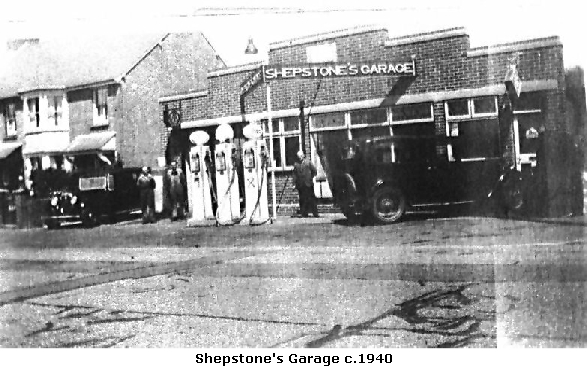
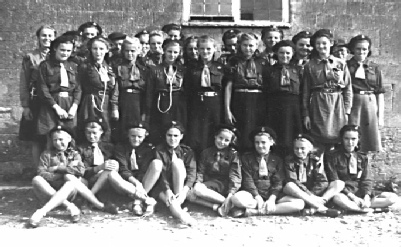
Upwey & Broadwey Guides c 1948
Back row: 3rd from right Veronica Hart
Middle row: Jean Grey; Unknown; Unknown; Vena Parker; Margaret White; Janet Allberry; Unknown; Unknown;
Pauline Fronks
Seated: Unknown; Wendy Godden; Celia Fryer;
Cecelia Symonds; Unknown; Unknown; Unknown;
Susan Dibben
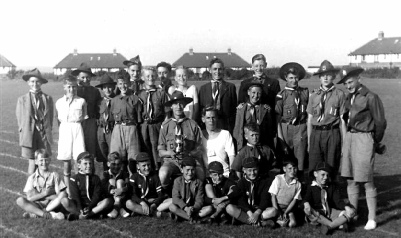
1st Upwey & Broadwey Scouts and Cubs c1948
Standing from left: Roger Groom; Billy Voysey; Graham Greetham; David Corbin; Alan Churchill; Brian Stacey; John Fryer; Eric Groom;
David Clark; Richard Tewkesbury; Alan James; Michael Voysey; Bill Bishop; Tim Warne;
Michael Bird
Centre: Mr Knight, leader; Brian Passmore;
Jimmy Greetham
Seated: Rodney Middle; Unknown; Unknown; Brian Barnes; Philip Groom; Unknown;
David Bishop; Unknown; Unknown
The Guide leader was Mrs Knight (wife of the Scout leader). Wendy Harris (nee Godden) remembers her first camp with the Guides in about 1948 was to Evershot 'where lots of us got badly stung by wasps; the next year we went to Peebles in Scotland. We travelled to Paddington by train, then Underground to Kings Cross for an overnight journey to Edinburgh. We had breakfast of porridge, with butter and salt, on the station. Ex-
The 1st Upwey & Broadwey Scouts and Cubs, met in the disused chapel in Church Street (next to Southbrook House). Scoutmaster was Mr R J Knight from Horsford Street, Weymouth.
As the men returned from the war the cricket and football clubs flourished once more. The Upwey & Broadwey Cricket Club moved their wooden 'club house' from farmer Arthur Virgin's field in Chapel Lane to the new, council owned, sports fields at Redlands in 1948.
Football found a home at 'The Plot', which was a field between Southbrook House and Prospect Place. A public footpath ran down the northern side of the field linking the Dorchester Road at its junction with Prospect Place to Church Street, emerging between Southbrook House and the disused Chapel.
The field's owner gave permission for this to become the home ground of the Bincombe and District Youth Football Club run by William Beck from Ropers Buildings. In 1948 Norman Restorick took kicking off the Upwey and Broadwey Football Club. A hut was provided as changing rooms and goal posts erected on the gently sloping ground. Several springs ran through the field and in wet weather the lower part of the pitch turned into a mudbath.
In their first season Don Legg (youngest of five sons from Icen Farm) was top goal scorer. His impressive 36 goals during the season helped to place the club in the fourth section of the Dorset League. The following season saw the club establish themselves as quite a force to be reckoned with in the minor leagues.
Upwey & Broadwey War Memorial & Thanksgiving Fund
There was strong feeling in the village that those who had lost their lives in the war should be remembered and that this memorial should benefit the community for many years to come. So it was that the Upwey and Broadwey War Memorial and Thanksgiving Fund was set up to raise enough money to build a community hall.
Money was raised by donations, house to house collections, jumble sales, dances, whist drives and the village fete which became known as 'The Big Affair' held on August Bank Holiday Monday. Within the first two months over £900 was donated by the community of 2000 people.
Percy Lovell, Dr J Pridham, H Medlam, O Gale and Ray Rogers were prime movers in the fund with A Cooke as treasurer and Captain W Menzies as secretary.
The overwhelming success of 'The Big Affair' and the need to raise even more money led to the formation of a Supporters Association. Fred Virgin, Frank Bishop and Leslie Davis were among those who worked enthusiastically for the cause.
In 1946 a third of an acre site in Victoria Avenue (a central position between the two villages) was purchased for £350.
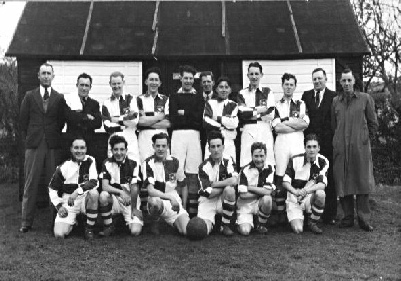
Upwey & Broadwey Football Team 1948/9 Season
Back row from left: S Carter; S Masters; S Brown;
P Scriven; C Ried; J Samways; E Carter; R Brooks;
B Moore; F Strange; N Restorick.
Front row: J Proctor; G Samways; L Smith; D Legg;
R Jolliffe; A Cooper
Among the officials were chairman M Taylor; secretary Norman Restorick; S Carter; S Masters and Fred Strange who was trainer for many years.
Fund-
The WI also decided to raise funds to pay for a purpose built meeting room within the proposed hall. This would provide them with a replacement for the WI hut, which was beginning to show signs of age.
Mr Steele from architects Jackson & Steele drew up plans for the hall which would seat 325 people. It would have a dance floor, meeting rooms, a gallery and projection room for cinema films, a stage, dressing rooms, cloakrooms, a kitchen and heating. The facilities would be built by A E Whettam & Sons. Once completed the hall would be available for hire to local groups and individuals for a variety of purposes.
Planning permission was granted in March 1952 and the foundation stone laid by Percy Lovell in July 1955.
THE BIG AFFAIR 1945
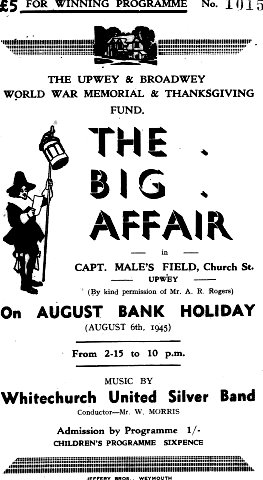 The first Big Affair was held on August Bank Holiday 1945 in Ray Rogers' field, Church Street. Upwey House, nestling in the lea of Windsbatch Hill looked down on this lovely setting with the River Wey running through horse-
The first Big Affair was held on August Bank Holiday 1945 in Ray Rogers' field, Church Street. Upwey House, nestling in the lea of Windsbatch Hill looked down on this lovely setting with the River Wey running through horse-
Attractions included a treasure hunt among the trees, riverside teas, a fun fair, and a flower show in a marquee. An arena surrounded by seating soon filled with people ready to watch the parades and displays, which included decorated bicycles, skipping and dancing displays by the children of Miss Weaver's dancing classes, a gymnastic display by boys from the Portland Borstal Institution and a special display by the National Fire Service. Music was supplied by Whitechurch United Silver Band conducted by W Morris.
Sports events for all took place all afternoon, including obstacle races, pillow fights and a tug of war tournament which was won by a team of eight from Broadwey.
Evening entertainment was provided in the marquee with a variety concert featuring Vic Bridle (illusionist), Al Robinson (clown), Vi Leslie (impressionist and dancer). Compared by Ernest Ball, music was provided by Davies Williams.
Over 4800 people visited the event which was a huge success and led to even more ambitious plans being made for the next year.
Flower Show Results
Vase of Sweet Peas 1 G Gathergood 2 P Dominey
Vase of Annuals 1 P Dominey 2 R Dominey
Vase of Perennials 1 R Dominey 2 P Dominey
Flowering Plant in pot T P Cousins
Bowl of Flowers 1 O J Gale 2 G Gathergood
Floral Table Decoration 1 Mrs R Foot 2 Mrs D Townsend
Bowl of wild flowers 1 Miss Fosbury 2 Miss Godden 3 Miss S Dibben 4 Miss Dominey
Sports Results
Decorated bicycle 1 R Clift 2 Wendy Godden
Girls skipping 1 Betty Dowdney 2 Kathleen Marsh 3 Florence Jesse
Slow bicycle race 1 Norman Strange 2 W Read
Obstacle race 1 G Topp 2 D Jolly 3 R Chalker 4 R Kinder
Musical bicycle 1 Ivor Chalker 2 Eileen Cleverton 3 Terry Hooper
Pillow fight 1 B Cave 2 Stuart Scott
Sack race 1 Eileen Cleverton 2 Betty Dowdney 3 Florence Jesse
Programme for the first Big Affair
in 1945
The 1946 Big Affair's programme lasted for 10 hours. More events were staged, including a gymkhana where 63 horses took part and a parade of the Cattistock Hounds. Strongman, Eric Marshall, from Portland entertained the crowds by supporting 20 people standing on planks and bending pokers with his bare hands. The evening ended with a 'Crystal Palace' firework display.
Organisers were amazed to find that over 13,000 people had come from far and wide. Arriving by bus, train, car, bicycle and on foot 10,000 people had paid their shilling and passed through the gates in the first four hours of the day.
By 1947 the Big Affair was the main Bank Holiday attraction in the area and had moved across the road to Hurdlemead. Extra buses were put on from Weymouth and the Supporters' Association worked hard to provide a full, event filled day. Seating for 2,000 was provided together with terraced standing for a further 20,000. Arena events included a sheep dog display, gymnastic display by Portland Borstal Boys and marching by the Bournemouth St John Ambulance Brigade Silver Band. Early evening entertainment was provided by the Happy Family Concert Party, and a boxing tournament between members of the newly formed Weymouth Amateur Boxing Club and boxers from Dorchester and Bridport. The evening was rounded off with a spectacular firework display -
The Big Affair continued for some years, although attendance never matched that of the astonishing 13,000 in 1946. In the days running up to the event practically every villager in Upwey and Broadwey would have some involvement. If they weren't helping to put up the marquees, they were marking out display areas with bales of straw, making cakes, sandwiches and buns for the refreshment tents or preparing for the fruit, flower and vegetable show. Percy Dominey from Church Street was one of the locals who stood guard at the entrance to the show tent on the night before, to protect the exhibits from sabotage.
